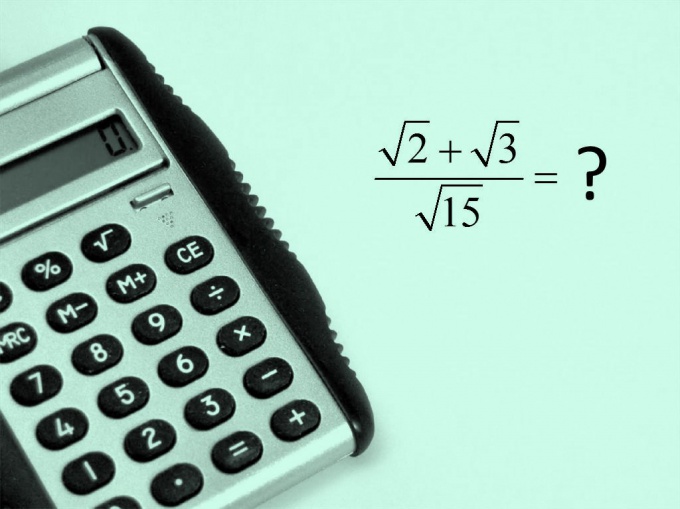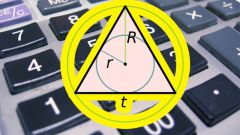Instruction
1
First, the addition of square roots, try to remove these roots. This will be possible if the number under the root sign are complete squares. For example, suppose you specify an expression √4 + √9. The first number 4 is the square of the number 2. Second the number 9 is the square of the number 3. So it turns out that: √4 + √9 = 2 + 3 = 5.
2
If under the root sign has no full squares, then try to stand under the sign of the root of the multiplier number. For example, suppose that the expression √24 + √54. Decompose numbers into factors: 24 = 2 * 2 * 2 * 3, 54 = 2 * 3 * 3 * 3. Among the 24, a multiplier 4, which can be taken from under the square root sign. Among the 54 - multiplier 9. Thus, it appears that: √24 + √54 = √(4 * 6) + √(9 * 6) = 2 * √6 + 3 * √6 = 5 * √6. In this example, as a result of the removal of the multiplier from under the sign of the root has the goal to simplify the given expression.
3
Let the sum of the two square roots is the denominator of a fraction, e.g., A / (√a + √b). And let your goal is "get rid of irrationality in denominator". Then you can use the following method. Multiply the numerator and denominator in the expression √a - √b. Thus the denominator will be a reduced multiplication formula: (√a + √b) * (√a - √b) = a – b. Similarly, if the denominator is given the difference of the roots: √a - √b, then the numerator and denominator must be multiplied by the expression √a + √b. For example, given a fraction 4 / (√3 + √5) = 4 * (√3 - √5) / ( (√3 + √5) * (√3 - √5) ) = 4 * (√3 - √5) / (-2) = 2 * (√5 - √3).
4
Consider a more complex example getting rid of irrationality in denominator. Let the given fraction 12 / (√2 + √3 + √5). You need to multiply the numerator and denominator in the expression √2 + √3 - √5:
12 / (√2 + √3 + √5) = 12 * (√2 + √3 - √5) / ( (√2 + √3 + √5) * (√2 + √3 - √5) ) = 12 * (√2 + √3 - √5) / (2 * √6) = √6 * (√2 + √3 - √5) = 2 * √3 + 3 * √2 - √30.
12 / (√2 + √3 + √5) = 12 * (√2 + √3 - √5) / ( (√2 + √3 + √5) * (√2 + √3 - √5) ) = 12 * (√2 + √3 - √5) / (2 * √6) = √6 * (√2 + √3 - √5) = 2 * √3 + 3 * √2 - √30.
5
And finally, if you only need an approximate value, it is possible to calculate the values of square roots on the calculator. Calculate values separately for each number and record with the required accuracy (for example, two decimal places). And then take the required arithmetic operations as ordinary numbers. For example, suppose you want to know the approximate value of the expression √7 + √5 ≈ 2,65 + 2,24 = 4,89.
Note
Square roots in any case can not be folded as a simple number, ie.√3 + √2 ≠ √5!!!
Useful advice
If you decompose a number into factors to make a square under the root sign, then take the opposite test - multiply all the multipliers and get the original number.



